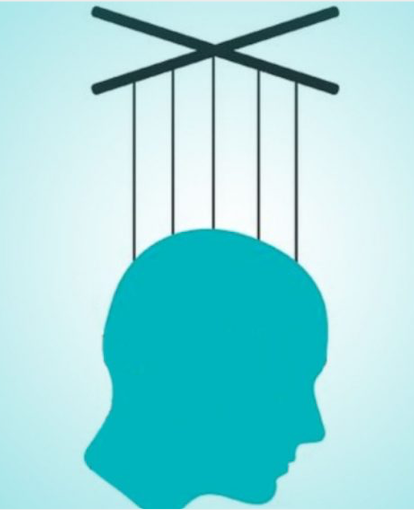 Theatre of the Mind is the staging of a drama in the imagination of the audience through sound.
Theatre of the Mind is the staging of a drama in the imagination of the audience through sound.
Theatre of the Mind occurs when the sounds coming from the speakers compels the audience to mentally construct an imaginary scene.
3 Reasons Why Theatre of the Mind Matters
1Theatre of the Mind is Involuntary.
 With the right sound effects, listeners have no choice but to visualize the scene you set forth for them. It will be a purely reflexive, automatic reaction.
With the right sound effects, listeners have no choice but to visualize the scene you set forth for them. It will be a purely reflexive, automatic reaction.
If your radio ad uses a sound effect of a certain kind of school bell ringing, along with the slam of a metal locker, plus some hallway murmuring chatter, your listeners will mentally imagine a school hallway.
The audience has no choice in this.
If they hear those sound effects, the audience can’t help but react to those sounds by imagining themselves inside that sonically described environment.
This, friends, is POWER.
2Theatre of the Mind is Participatory.
Unlike video which SHOWS the viewer the high school hallway scene, the radio ad’s sound effects forces the listener’s mind to participate in actually constructing the scene.
Each listener is in a school hallway, but some will remember their high school, and some might recall their Junior High.
In every case, though, it will be a hallway constructed from their experiences and memories because their imaginations built it.
So not only is Theatre of the Mind participatory (and therefore potentially more engaging than video), it’s also tailored to be maximally relevant and emotionally evocative for each listener.
Then, of course, there’s the benefit of wicked cheap sound effects on radio vs. really expensive special effects on video.
When it comes to effectiveness, production costs matter. Bang for the buck, matters.
3Theatre of the Mind acts as a portal INTO a story.
The persuasive power of stories require one crucial factor: You must transport the audience into the story world.
 If the audience never gets pulled into the story you’re telling, you don’t get the persuasive benefits.
If the audience never gets pulled into the story you’re telling, you don’t get the persuasive benefits.
Normally, pulling people into the story requires great writing, cinematography, acting, stage craft, etc.
There’s an art to telling a story so that people are entranced into wrapt attention, no matter the format or medium.
But Theatre of the Mind allows you to cheat.
Because Theatre of Mind is both involuntary and participatory, it allows you to pull listeners into the story through sound effects without requiring extraordinary craft or brilliant writing.
Theatre of mind allows you to reliably and consistently transport listeners into your story world.
And that allows you to gain all of the persuasive benefits of story.
How to Reliably Create Theatre of the Mind
The use of three scene-creating sound effects will reliably induce Theatre of the Mind in listeners.
 Hearing a seagull doesn’t put you on the sea shore or out at sea.
Hearing a seagull doesn’t put you on the sea shore or out at sea.
But if you hear a seagull, plus the sounds of waves, plus maybe the distinctive sound of a buoy bell, then — voila: you’re placed on a sea shore.
Of course, once you’ve set that stage, you have to have something interesting taking place within the scene that you’ve established.
Without ACTION and CHARACTERS, you won’t hold the listeners’ attention and keep them inside the story world.
But as a simple portal into the story world, three environmental or scene-setting sound effects will work like a charm.
And, yes, there’s actually solid science behind this.
Scientists studied how the brain constructs fictional scenes from individual descriptive elements by sticking people into an FMRI and playing recordings of narrators describing fictional scenes, one descriptive element at a time.
So they played these descriptive phrases one at a time while asking the participants to integrate them into a single imaginary scene.
With every added scene descriptor, the scientists watched the brain light up.
And the magic happened — maximum engagement of all brain regions, but most especially of the prefrontal cortex — with three descriptors.
More descriptors past three didn’t increase brain activity.
Think of the scene-setting sound effects as a descriptor. Each sound effect adds to the scene, but the magic happens at the integration of the third sound effect.
That’s when you’ve achieved Theatre of the Mind.
But don’t take the scientist’s word for it: listen and “see” for yourself.
Watch the video below and count the sound effects in each example of “Theatre of the Mind.” You’ll find that there are three per example:
- Getting a Foot in the Door — Of Perception - November 27, 2025
- What Digital Superstars Know About Offline Advertising - November 17, 2025
- Unmistakable: A Tale of Two Boots and Branding Done Right - November 8, 2025

